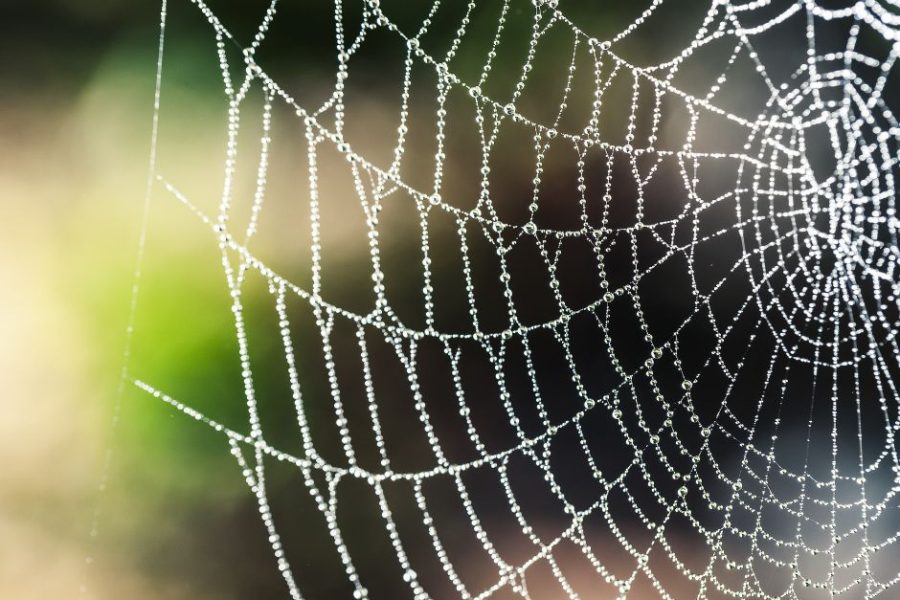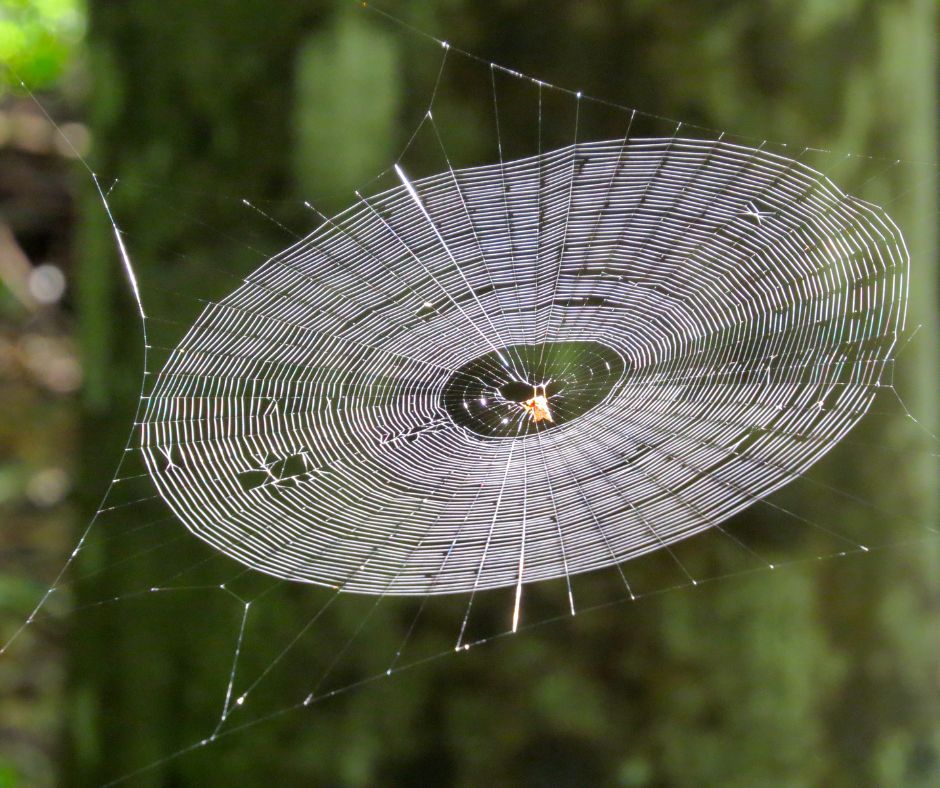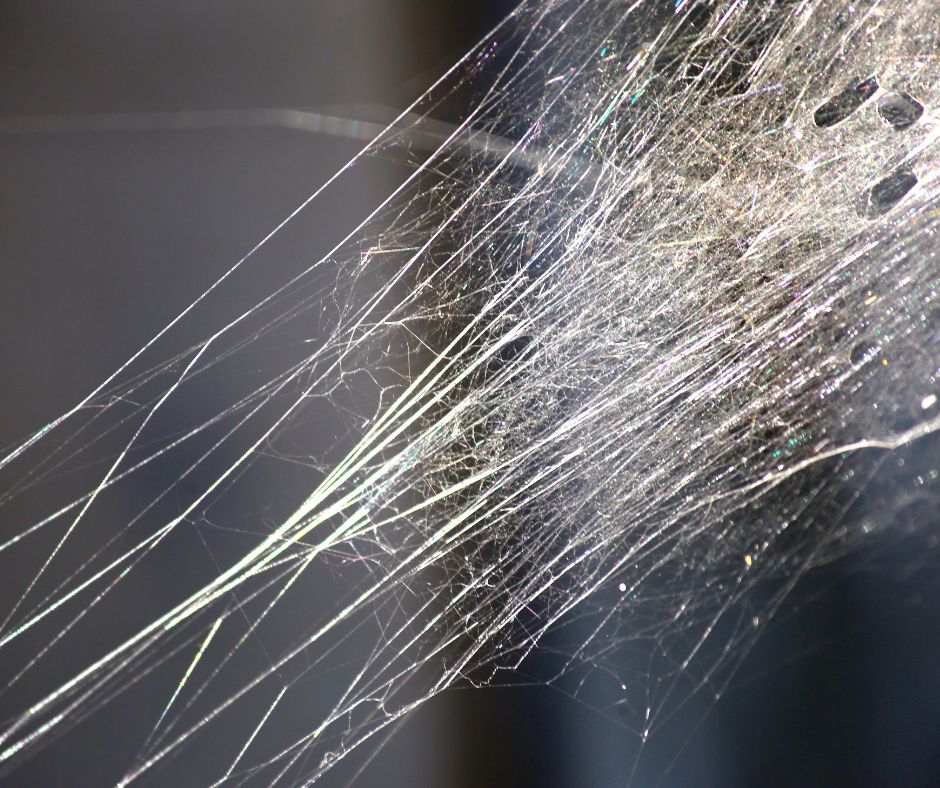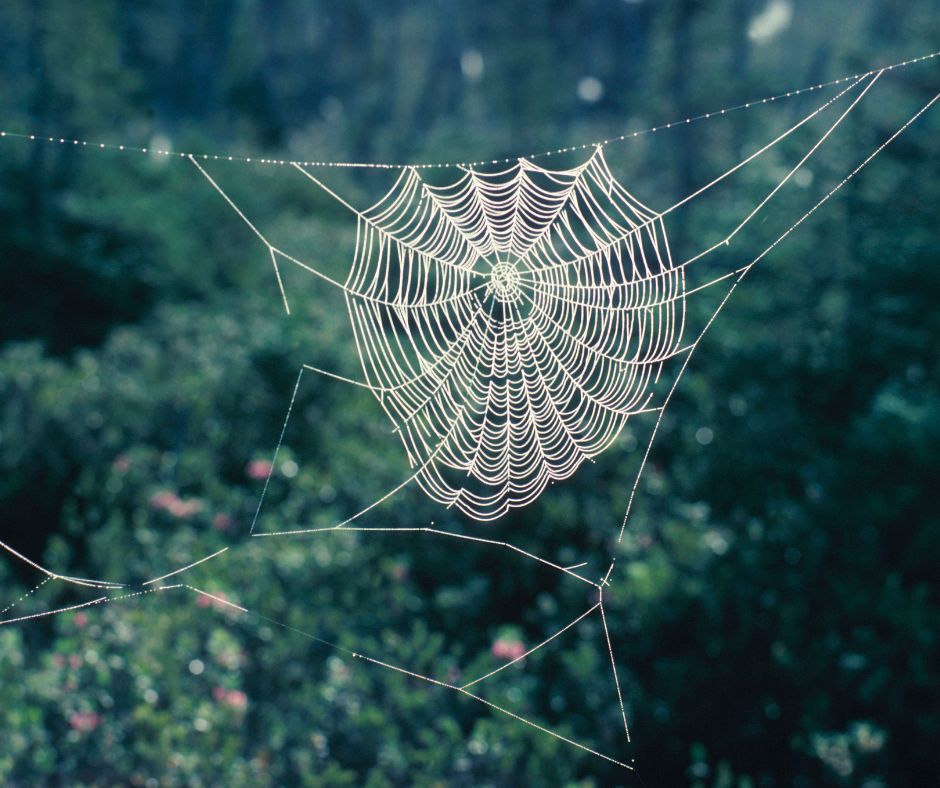
Have you ever stopped to take a closer look at the mysteriously stunning spider web designs? Or maybe you’re so frightened of these little artists that you would never risk getting closer to their webs than you need to.
Whatever the case, spider web designs have a unique natural beauty that inspires scientists and other professionals to want to know more.
In this blog, you’ll discover what makes spider webs so remarkable. The spider experts at James River Pest Solutions invite you to continue reading to learn about the wonder of spider web designs.
It may not diminish your fear of spiders, but perhaps you’ll have more appreciation for these incredible creatures.
What is Spider Silk?
To understand spider web designs, you first need to know a little about spider silk. The natural silk that these fascinating creatures produce is incredibly strong. Even though it’s thinner than a strand of hair, it can maintain its durability in temperatures well below freezing.
Spider silk is flexible and sticky to catch the prey that flies into the web. Moreover, it won’t snap unless hit with a certain pressure and stretches two to four times its length.

How Do Spiders Produce their Silk?
A male spider may have about three silk glands, while females typically have four. Her extra silk gland is present to spin a protective egg sac for her eggs. In total, there are seven different kinds of silk a spider can produce, depending on the types of glands it has.
The glands are on the underside of a spider’s abdomen and store “dope,” or a watery fluid that produces the silk. When the fluid passes through the spinneret, it solidifies to create this unique and tough silk strand.
What Does a Spider Use Silk for?
Spiders use their silk for many purposes. Below, you will discover a few of the primary uses for spider silk:
- Wrapping and immobilizing prey
- Designing sticky webs to catch prey
- Staying attached to their web using a dragline
- Parachuting to disperse young spiders or float to other areas for food
- Creating shelters, like burrows or nests
- Encasing eggs in a sac
- Mating and transferring sperm to the female
What’s Behind Spider Web Designs?
Many spiders use their silk to build mind-blowing webs. Continue reading to learn more about spider webs and why they have captured the curiosity of scientists, researchers, and designers.
Strength
The strength of spider silk is no joke. Pound for pound, it’s more durable than steel. That’s why any spider web design is incredibly resistant to damage. With the web’s ability to stretch and the strength of the silk, it’s no wonder spiders are many insects’ top predators.
Scientists are constantly studying the mysterious phenomenon of spider silk and web designs. They have quickly discovered a web can undergo a fair amount of stress and impact before finally breaking.
Optimized Function
The spider web is designed to function through high winds, falling twigs and seed pods, struggling insects, and so much more. When the web is hit with force, the strands will stiffen and stretch to absorb the impact.
Even when the spider web becomes damaged, it’s usually only affected in a single location. This allows the web to remain intact, and the spider can use far less energy and time repairing a particular section rather than creating an entirely new web. Furthermore, the localized damage often doesn’t compromise the function of the whole spider web design. So, the spider can choose not to repair the spot or at least take time to get to it.
Some studies have found that after the web is damaged, the repairs make it more durable and resistant than before! Of course, there comes the point when the web weakens. Nevertheless, the spider web is at its strongest between being freshly spun and sustaining some harm.

Theories of Why Spiders Make Such Intricate Designs
Have you ever wondered by a spider’s web is so fascinating to look at? Why aren’t all webs messy and chaotic? What is the benefit of such incredible designs?
When it comes to variations in spider web designs, research continues to uncover the secret to why so many stunning differences exist. However, there are some interesting theories based on studies:
- Intricate spider web designs may exist to make their webs more noticeable, so larger species who are not the spider’s prey (like humans) won’t accidentally damage them.
- The web may be carefully designed so that the spider better blends with the web to hide away from prey and predators.
- The various spider web designs may attract insects to a particular section of the web in the spider’s favor.
Overall, scientists have concluded that the design of spider webs at least provides strength and stability for the entire web. However, they’ve only begun to scratch the surface of this mysterious topic.
What Can Studying Spider Web Designs Do?
Even with all the advanced technology and machinery of modern science, humans have yet to discover how to produce synthetic spider silk. But this won’t stop scientists from continuing their quest to harness the remarkable power and benefits of spider silk and spider web designs.
Spider silk is resilient and biodegradable, capturing the curiosity of researchers and designers. Art, architecture, automobiles, engineering, technology, and more have been inspired by what we know about spiders and their mysterious webs.
For instance, automobile designers are working on built-in zones where localized damage acts like a resilient spider web. Instead of the driver absorbing the bulk of a head-on collision, a particular zone will.
Likewise, architects are discovering new ways to create a system of buildings to better survive a devastating earthquake. Innovations in internet security, too, are inspired by spider web designs.

Is Your Home or Yard Decorated with Extraordinary Spider Webs?
When you spot a spider web on your property or perhaps indoors, you can’t help but stop and stare. These masterpieces are incredible to observe. They’ll leave you wondering how a tiny creature could produce something so awe-inspiring.
But they may also make you realize you have a spider problem. Despite the beauty of their sticky webs, some spiders can be dangerous or, at the very least, a pest in your yard or home.
If you’re spotting more webs than you feel comfortable with or suspect they belong to a venomous species, like the black widow or brown recluse spider, please reach out to the trusted team at James River Pest Solutions.
Having an abundance of spiders hanging around can mean many things. For one, you may risk your safety with a venomous spider bite that can send you or a family member to the hospital.
On the other hand, numerous spiders may mean you have other pest issues to address. Spiders often show up in large numbers when there is plenty of food to go around. And what do most spiders eat? Insects and other spiders.
Stay on the safe side, and call James River Pest Solutions when discovering spider webs in your home or yard. Our specialists will inspect the entire property to find the root cause and eliminate the problem.
Call us today or fill out our convenient online form for a quick response.